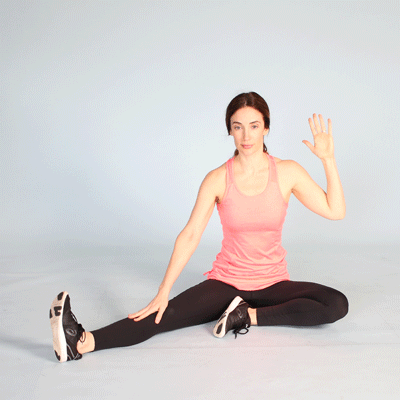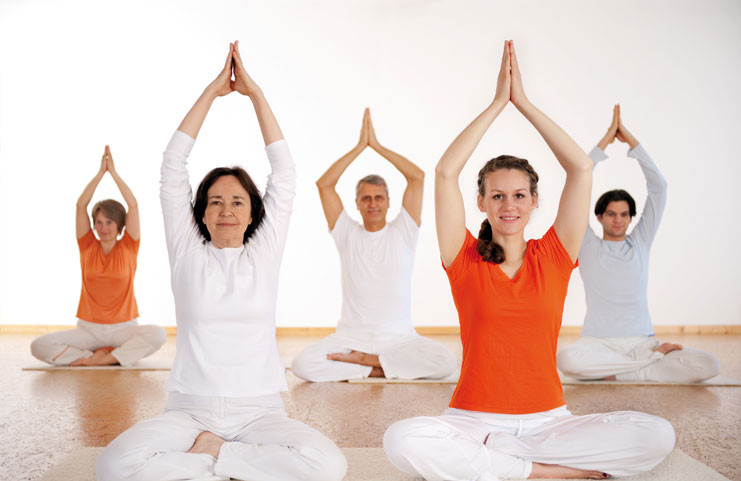
While hot yoga practice is beneficial for overall health and fitness, some people find it uncomfortable and difficult to do. To avoid this problem, the best advice is to prepare yourself by eating a banana or raw coconut water before a class. Drinking lots of water is also important, especially after a workout. The temperature in a room can quickly change. This is a common problem in hot yoga. But, it is easy to avoid by following these guidelines.
Hot yoga has the first benefit of increasing bone density. High temperatures encourage higher bone density thanks to hot yoga. Hot yoga can also benefit older adults by slowing down the effects of ageing on bone density. For women suffering from premenopausal osteoporosis hot yoga may be beneficial as it can increase bone strength. Yoga may not offer the same benefits for everyone, despite its many benefits.

Hot yoga is not only good for weight loss but also helps to improve balance and core strength. Hot yoga can also improve the quality of your day. People with seasonal depression often report feeling better when it's warmer. Yoga can be difficult and exhausting for beginners. Listen to your body and do yoga regularly. It can help with a more active lifestyle and a healthier body.
Hot yoga can be described as regular yoga. However, it is done in a room heated to 78 degrees Fahrenheit. This temperature is considered "lightly heating." This style's goal is to connect movement with breath and improve cardiovascular fitness. For those who are new to hot yoga, it is important to start slow and build up to a high level of physical and mental health. Hot yoga can bring you many of these same benefits as regular practice.
At least two hours before class is the ideal time to practice yoga. Bikram yoga uses a hot room in order to avoid injury. This type of yoga is popular for improving health and fitness. It is possible to feel dehydrated or suffocated in a hot space. It is best to do the exercise in a studio with a suitable humidity level.

Hot Vinyasa focuses on patience and concentration. As you progress from one pose to another, you'll learn patience and how to focus. You will develop your physical strength and flexibility. You will also be healthier. Your muscles will adjust to temperature changes. It is important to remember that yoga is not a competition and should not be done as often as possible. Pre-existing conditions are not suitable for yoga.
FAQ
Why does our weight change with age
How do I know if my bodyweight changes?
When there is more muscle mass than fat, weight loss can occur. This means that daily energy needs must be greater than the calories consumed. Activity levels are the most common reason for weight loss. You can also lose weight due to stress, illness, pregnancy, hormonal imbalances and certain medications. A person who has more fat than their muscle mass will experience weight gain. It happens when people eat more calories than they use during a given day. It can be caused by overeating or increased physical activity as well hormonal changes.
Our bodies lose weight mainly because we eat less calories that we burn. The main reason we lose weight is because we exercise more often. This increases our metabolism rate and burns more calories each day. However, this doesn't mean that we'll necessarily get thinner; what matters is whether or not we're losing fat or gaining muscle. If we're burning more calories that we consume, we'll lose weight. But if we're consuming more calories than we're burning, then we're actually storing them as fat.
As we age we tend to be slower in moving and thus we don't move nearly as much. We also tend to consume less food than when we were younger. This is why we tend to gain weight. On the flip side, we tend to have more muscle mass so we look bigger than we really are.
There's no way to tell how much weight you've lost unless you weigh yourself every week. There are many methods to measure your weight. You can gauge your waist size, hips, hips, thighs and arms. Some people prefer using bathroom scales and others prefer tape measure.
Track your progress by measuring your waistline and weighing yourself every week. You can also take photos of your self every few months to track how far you've come.
Online measurements of your height and weight can help you determine your body mass. If you're tall at 5'10", and weigh 180lbs, your weight would be 180.
How can you live your best life every day?
Find out what makes YOU happy. This is the first step in living a life that you love. You can then work backwards once you know what makes YOU happy. Asking other people how they live their best lives every day is also a good idea.
You can also read books like "How to Live Your Best Life" by Dr. Wayne Dyer. He discusses happiness and fulfillment in every aspect of our lives.
How often should i exercise?
A healthy lifestyle requires regular exercise. You don't have to exercise for a certain amount of time. The key is finding something you enjoy and stick with it.
If you work out three times a week, then aim to complete 20-30 minutes of moderate intensity physical activity. Moderate intensity means that you will still be working hard even after your workout is over. This type is good for burning around 300 calories.
Walk for at least 10 minutes four days a weeks if you prefer walking. Walking is low-impact and easy on the joints.
Jogging is an alternative to running. You can do it for as little as 15 minutes each day. Running is a great way of burning calories and building muscle tone.
Begin slowly if your are not used to working out. Start by doing 5 minutes of cardio each day, a few times per week. Gradually increase your cardio time until you reach the goal.
Statistics
- Extra virgin olive oil may benefit heart health, as people who consume it have a lower risk for dying from heart attacks and strokes according to some evidence (57Trusted Source (healthline.com)
- WHO recommends reducing saturated fats to less than 10% of total energy intake; reducing trans-fats to less than 1% of total energy intake; and replacing both saturated fats and trans-fats to unsaturated fats. (who.int)
- nutrients.[17]X Research sourceWhole grains to try include: 100% whole wheat pasta and bread, brown rice, whole grain oats, farro, millet, quinoa, and barley. (wikihow.com)
- In both adults and children, the intake of free sugars should be reduced to less than 10% of total energy intake. (who.int)
External Links
How To
What does the term "vitamins" mean?
Vitamins are organic compounds that can be found in foods. Vitamins help us absorb nutrients from foods we eat. Vitamins cannot be made by the body; they must be taken from food.
There are two types of vitamins: water soluble and fat soluble. Water-soluble vitamins dissolve quickly in water. Vitamin C,B1(thiamine), B2 (2riboflavin), and B3 (3niacin), as well as vitamin C,B1, B2 (riboflavin), and B3 (niacin), vitamin B6 (pyridoxine), vitamin folic acid (biotin), pantothenic, and choline are examples. Fat-soluble vitamins are stored in the liver, fatty tissue and kidneys. Vitamin D, E, K and A are some examples.
Vitamins can be classified according to biological activity. There are eight major vitamin groups:
-
A – Essential for normal growth, and the maintenance of good health.
-
C – essential for proper nerve function.
-
D - essential for healthy bones, teeth, and gums.
-
E - needed for good vision and reproduction.
-
K – Required for healthy nerves & muscles.
-
P - essential for strong bones, teeth and tendons
-
Q - Aids digestion and iron absorption
-
R - Required for red blood cell production
The recommended daily allowance for vitamins (RDA) varies based on gender, age, and physical conditions. The U.S. Food and Drug Administration (FDA) sets the RDA values.
For adults 19 years and over, the RDA of vitamin A is 400mg per day. However, pregnant women need 600 micrograms per day because it is important for fetal development. Children ages 1-8 require 900 micrograms per day. Infants under one year of age require 700 micrograms per day, but this amount decreases to 500 micrograms per day between 9 months and 12 months of age.
Children ages 1-18years who are obese need 800 micrograms per day while those who are overweight need 1000 micrograms per day and children who are underweight need 1200 micrograms per day to meet their nutritional needs.
Children ages 4-8 years who have been diagnosed with anemia need 2200 micrograms per day of vitamin C.
Adults over 50 years of age need 2000 micrograms per day for general health. Because of their higher nutrient needs, women who are pregnant or nursing need 3000 mg per day.
Adults over 70 require 1500 micrograms each day, since they lose around 10% of their muscle mass every decade.
Women who are pregnant or nursing need more than the RDA. Pregnant women require 4000 micrograms daily during pregnancy, and 2500 micrograms every day after birth. Breastfeeding mothers need to consume 5000 micrograms every day when breastmilk has been produced.